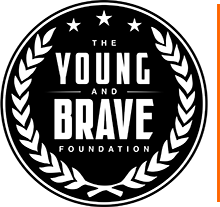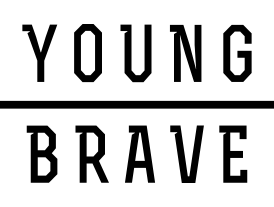With Hope, The Odds Don’t Matter.

My name is Heather Von St. James. I’m a mesothelioma survivor.
Mesothelioma is an old man’s disease, or so most people think, if they think about it at all. The kind of thing that veterans and construction workers and other people who worked with asbestos get. A person inhales the fibers and they lodge themselves permanently in the lining of the lungs, weakening the immune system until mesothelioma appears, decades later. It’s not the sort of thing a 36-year-old hairdresser usually gets.
When I was young I used to love to wear my dad’s coat from work. It was big, warm and comforting, made of heavy nylon. It made me feel closer to him when I was going about my chores in the bitter cold of South Dakota. It also happened to be covered with white drywall dust from his construction job. Every time I wore his coat, I breathed in a little more asbestos. That was enough.
 I had just celebrated the birth of my daughter, Lily, when I was diagnosed. Rapid weight loss, low energy, and trouble breathing that I thought was just a slow recovery from childbirth turned into chronic fatigue and a strange heaviness in my chest. A visit to my doctor turned into the word that nobody wants to hear from a physician. From joy to terror in just a few short months.
I had just celebrated the birth of my daughter, Lily, when I was diagnosed. Rapid weight loss, low energy, and trouble breathing that I thought was just a slow recovery from childbirth turned into chronic fatigue and a strange heaviness in my chest. A visit to my doctor turned into the word that nobody wants to hear from a physician. From joy to terror in just a few short months.
Very few people with mesothelioma survive for more than a year. I was told I had 15 months, five years at the most with conventional treatments. My husband Cameron and I decided that wasn’t good enough. I was going to scrap and fight and do everything I could to beat it. When my doctor told us that a drastic surgery called an extrapleural pneumonectomy offered the best possibility of survival, we knew we had to take the chance, even though the possibility of side effects was very high.
We traveled from our home in Minnesota to Boston’s Brigham and Women’s Hospital, where Dr. David Sugarbaker, who pioneered the procedure, was based. On February 2, 2005, after a sleepless night of preparation, I went under anaesthetic, hopeful that I would emerge with my mesothelioma cured, but fearful that I wouldn’t wake up at all. While I was under, surgeons removed my left lung, the pleura where the cancer was, the left half of my diaphragm, and the lining of my heart (pericardium). The diaphragm and pericardium were replaced with surgical gore-tex. Doctors then pumped a heated chemotherapy solution into my chest and washed it around for an hour before they pumped it back out. Finally, after eight hours, they closed my chest up.
Afterward, I spent months recovering, first in Boston and then in South Dakota with my parents and Lily. The worst part was being apart from my family. First from Lily when I was in Boston, then from Cameron when I was in South Dakota.
Because the survival rate is so low there aren’t many positive stories about mesothelioma. Hope is something that every cancer patient needs, but it can be in short supply. I found my own hope throughout my illness, leaning on my faith and my family’s love for support, but I decided once I came out of surgery that I would strive to be a beacon for others afflicted with mesothelioma. I try to meet with other patients whenever I go back to Boston for one of my biannual checkups to share my experiences with them and help them through the most difficult time in their lives. I always make sure to go to the new patient orientation to help those newly diagnosed in whatever way I can. I want to let people know that mesothelioma is beatable, that you can live life with one lung and live a good life at that. I like to say that I may never run a marathon now that I only have one lung, but I was never going to anyway, so it’s not much of a sacrifice.
I also got involved with organizations like the Mesothelioma Applied Research Foundation and the Asbestos Disease Awareness Organization. The scary thing is that asbestos still isn’t banned in the United States. Although use has gone down since peaking in the 1970s, more than a thousand tons are still used every year. Asbestos was used in so many old houses, schools and office buildings that it often gets exposed during renovations and natural disasters. Because mesothelioma’s latency period is so long, the number of cases is expected to rise in the coming decades, and people are getting it younger and younger, like me, from secondary exposure. But in spite of promising advancements, mesothelioma research is still sorely underfunded. It’s simply too rare to attract very much attention. I’m doing what I can to change that.

I just celebrated the eighth anniversary of the day I had my lung removed, an event my sister jokingly dubbed LungLeavin’ Day. It’s turned into a party that we use to raise money and awareness, and every year it grows bigger, reminding me of everything I have here and of the unconditional support and love I’ve received from my family and friends every step of the way. It makes me incredibly grateful for every moment I get to spend on this earth.
I’m one of the lucky ones, eight years on. But every time I go back to Boston there are new faces, people just starting out on the same painful journey I endured, their family members struggling to understand. I don’t want to just sit back and do nothing. I want to do whatever I can to help them. I want to make their ordeal just a little easier to bear. I want them to know there’s hope.
To learn more about my story, please visit http://www.mesothelioma.com/heather/


